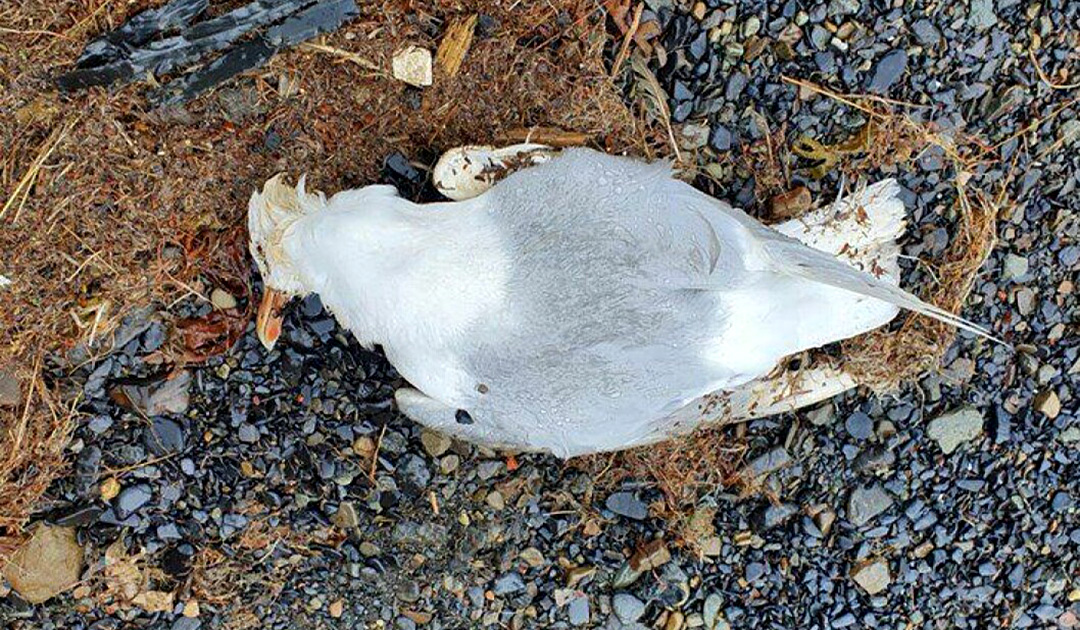
CORRECTION: The original article reported that the virus had been detected in thick-billed murres and eider ducks. In fact, however, the virus was only detectable in the two thick-billed murres. However, this error occurred due to a translation error of the press release. Furthermore, we were advised by the Greenland Institute of Natural Resources that monitoring of bird populations had been conducted in several locations during the past year, but no testing for avian influenza had been conducted because observers had not noted any unusual mortalities. Both errors have been corrected in the text. We regret the errors and apologize for any inconvenience.
Not only humans are affected by pandemics. The animal world is also familiar with such global outbreaks of pathogens. The best example of this is the currently rampant, highly virulent form of H5N1 avian influenza, which circulated in the northern hemisphere last year and has now also reached far south, mainly due to the migration of birds between summer and winter quarters. The virus has also been detected on Svalbard and in Nunavut. Now Greenland has joined the list.
HPAI H5N1 virus has been serologically detected in two thick-billed murres out of five dead eider ducks from the region of the Greenlandic village of Qeqertarsuaq and two dead thick-billed murres in Fyllas Bank near Greenland’s capital, Nuuk. This makes it clear that Greenland had also been hit by this highly contagious and now globally circulating form of avian influenza. This is reported by the Veterinary and Food Administration of Greenland VFMG in a press release issued by the government yesterday. “This is the first time that the highly contagious form of avian influenza has been detected in Greenland,” authorities wrote in the statement.

As early as spring 2022, local indigenous people had reported unusually high numbers of dead birds at several locations in West Greenland. The Greenland Institute of Nature and the Greenland Veterinary and Food Administration, together with Danish colleagues, investigated the reports and sent the collected dead animals to the State Institute of Serology at the University of Copenhagen. These confirmed with the help of serological tests that the two Brunnich’s guillemots were carriers of the virus and probably also died as a result of the disease. However, it is unclear where the animals got the virus. “Fyllas Bank is an important wintering habitat for numerous bird species that breed in the summer in Svalbard, Iceland and Nunavut,” the veterinary authority says in its statement.




The virus, officially named HPAI-H5N1, reached almost every country in the northern hemisphere last year, causing massive damage in bird colonies. Economically, it was also an absolute disaster, as millions of chickens, turkeys, geese and ducks had to be put down, partly because of an infestation and partly to contain the spread. According to the experts, however, it is not possible to quantify how many birds perished in Greenland. But it is believed that numerous colonies were affected and must have recorded high death rates. The two regions where the dead birds came from are popular bird areas because of their high productivity. Many auk species and other seabirds spend the winter months in southwestern Greenland, where conditions are somewhat more pleasant than in the summer areas of Svalbard, Nunavut, and northern Greenland. But when spring comes and the birds move to their breeding grounds, they automatically bring the virus with them. Especially in guillemots, which sit close to each other and are not exactly gentle with each other in other ways, the virus could circulate unchecked. If the birds then fly away due to breeding and die while foraging at sea, an infestation is also detected late.
Although the virus is harmless to humans in normal cases and can only be transmitted to humans in the event of intensive and prolonged contact. But the authorities are nevertheless warning the population to be particularly careful this year. A number of simple measures are being taken to prevent the virus from spreading to humans after all. Caution is also called for, because a study from Spain showed that H5N1 does have the potential to be transmitted from mammal to mammal. And a new “Made in the Arctic” pandemic is definitely in no one’s interest.
Dr Michael Wenger, PolarJournal
More on the topic





